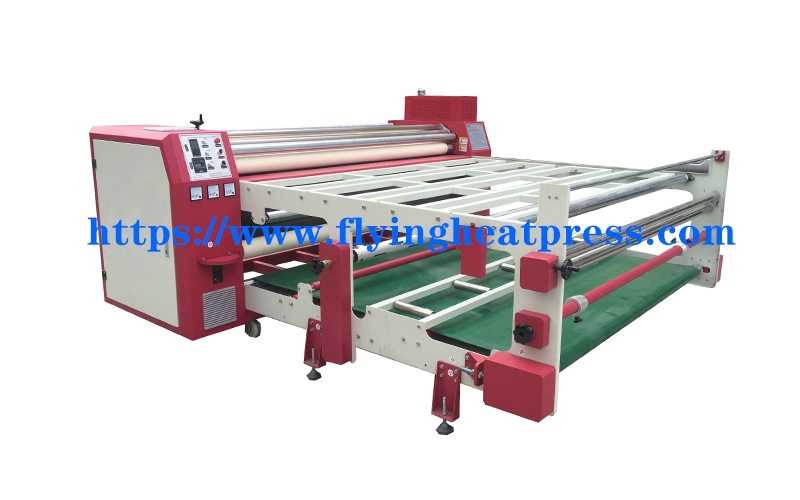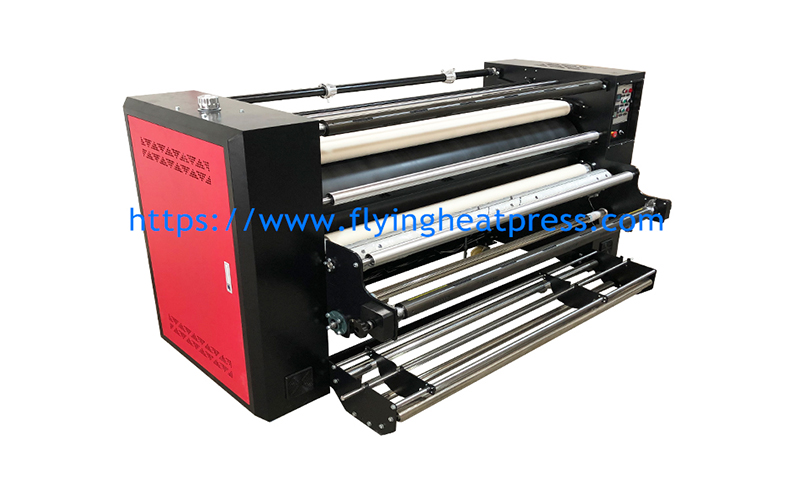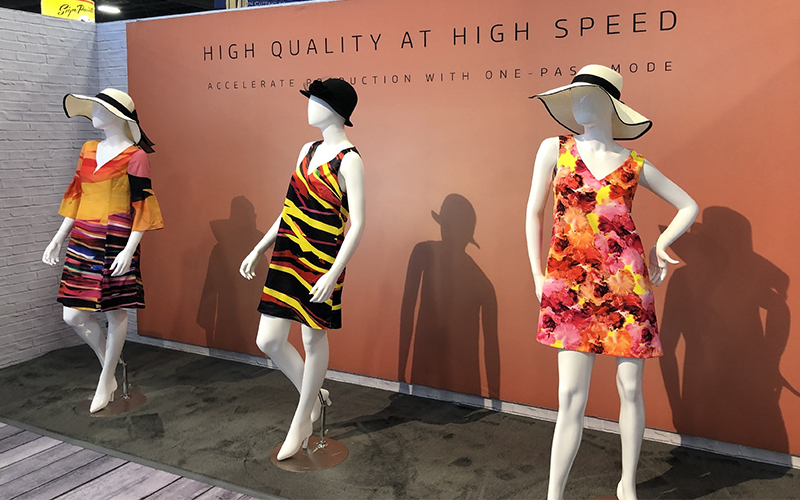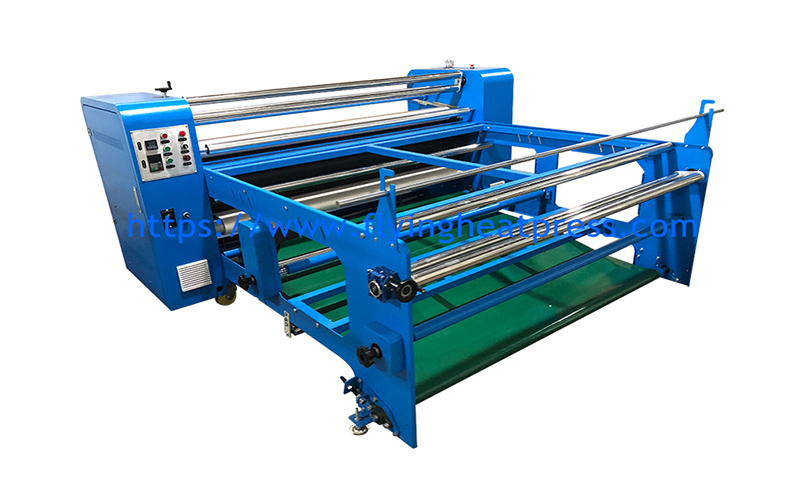What’s a roller heat press machine ? (Part two)
Link to the previous article ,Title : What’s a roller heat press machine ? (Part one)
Advantages of Rotary heat transfer printing machines
5.Cost-Effectiveness:
Over time, roller heat transfer machines reduce labor costs due to their automation and minimal human intervention, and it lowers printing costs by using less ink and materials compared to traditional methods.
6.Durable and Long-Lasting Prints:
The heat transfer process embeds the design into the fabric or material, making the prints more durable and resistant to washing, abrasion, and fading.
7.Ease of Use:
Many machines come equipped with user-friendly interfaces, allowing operators of varying skill levels to efficiently run and maintain the machine.
8.Clean and Eco-Friendly:
This printing method produces less waste and requires fewer chemicals compared to screen printing or other traditional methods, making it an environmentally friendly option.

1.Technological Innovation and Improvement In the future, roller heat transfer printing machines will develop towards higher precision, higher efficiency, and lower energy consumption. Technological innovations will drive their application in more fields.
2.Market Prospects and Application Expansion As the demand for personalized, high-quality printed products increases, the market prospects for roller heat transfer printing machines are broad, and their application range will further expand.
3.Automation and Smart Technology Integration:
The future will likely see increased automation in roller heat transfer machines, reducing human intervention and improving operational efficiency. Integration with IoT (Internet of Things) technology can enable real-time monitoring, predictive maintenance, and performance optimization.
AI-driven systems may also be introduced to automatically adjust heat, pressure, and speed based on material type and design complexity, further enhancing precision and reducing errors.

4.Energy Efficiency and Sustainability:
As industries focus more on sustainability, future machines will adopt more energy-efficient components and technologies. These could include advanced heating elements that consume less power or use alternative energy sources, contributing to lower operational costs and a reduced environmental footprint.
More eco-friendly consumables, such as biodegradable transfer papers and eco-friendly inks, will also gain traction.
5.Advanced Materials Compatibility:
Future machines will likely be engineered to handle an even wider array of new and innovative materials beyond the traditional textiles and films. This might include smart textiles (wearables with embedded sensors), recycled materials, and other specialized substrates like synthetic leathers or plastics.
With the rise of sustainable fashion, machines that can easily print on organic or recycled fabrics will become highly relevant.
6.Faster Production Speeds:
There will be continued emphasis on increasing the speed of production without compromising quality. Innovations in roller design, heating elements, and conveyor systems may allow for faster throughput, catering to industries with high-volume needs such as fashion, home décor, and promotional products.
7.Hybrid Printing Technologies:
Future machines may combine heat transfer with other printing technologies such as digital printing, sublimation, or even 3D printing, allowing for more diverse applications and creative possibilities. This hybridization could enable the creation of multi-layered designs, textures, or finishes that weren’t previously possible with a single method.

8.Customizable and Modular Designs:
Machines will likely become more modular, enabling businesses to easily customize or upgrade components like rollers, heating elements, or control interfaces. This allows for flexibility in production, as companies can tailor machines to their specific needs or future-proof their systems by upgrading rather than purchasing entirely new units.
Compact designs might also emerge, making these machines more accessible to smaller businesses or studios with limited space.
9.Improved User Interfaces and Software:
The user experience will be enhanced with more intuitive, touchscreen interfaces, and smart software that simplifies complex operations. Software might allow users to simulate the heat transfer process before printing, adjust settings based on real-time data, or even integrate with cloud-based systems for remote monitoring and control.
AI-assisted design adjustments could enable the machine to automatically correct color or alignment issues before printing, further reducing waste.
10.Augmented Reality (AR) and Virtual Reality (VR) Integration:
To improve training, setup, and troubleshooting, AR and VR technologies could be implemented. This will allow operators to virtually interact with the machine in a simulated environment before making changes to the actual system, reducing downtime and errors.
11.Personalization and On-Demand Printing:
As customization and on-demand production continue to grow, future machines will likely emphasize capabilities that cater to small-batch or one-off production while maintaining efficiency. With the rise of personalized products in sectors like fashion, home décor, and promotional items, machines that can rapidly switch between jobs and offer precise personalization will be in high demand.
12.Advanced Color Management and Precision:
Innovations in color management systems will likely lead to more accurate and vibrant prints. Future machines could integrate spectrophotometers or AI-based color calibration tools to ensure exact color matching, even across different substrates or batches, ensuring brand consistency and high-quality finishes.

Roller heat transfer printing machines, as advanced printing devices, have significant market value and development potential. With continuous technological progress and increasing market demand, these machines will showcase their advantages in more fields, driving the development and advancement of printing technology.
Contact: Lynne
Phone: +86 135 3266 0169
E-mail: info@flyingheatpress.com
Whatsapp:8613532660169
Add: No.25 Junda Middle Road , Dongkeng Town , Dongguan City , Guangdong Province , China ,523445
We chat
